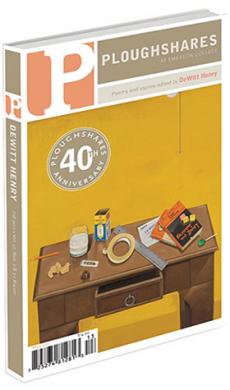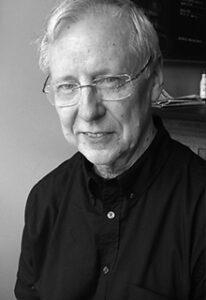Review: The Other Side of the Mirror
Mark Twain once remarked that God invented war to teach Americans geography. If my knowledge of the Middle East is indicative, it may be time for us to try a different strategy. Even with revolutions spreading from country to country, and heavy American involvement in about half of them, I was stunned to discover—when I looked at a map in Brooke Allen’s travel book about Syria—that the country was on the Mediterranean and shared a long border with Iraq. My mental map of the area that stretches from Libya to Yemen to Afghanistan, all of which we are currently attacking, was almost totally wrong.
I knew very little about Syria other than its capital, which I had memorized at some point during grade school. Nor was I particularly interested in learning more, at least at first. I picked up The Other Side of the Mirror because I had read some of Allen’s reviews and essays in The New Criterion and already knew that she was a wonderful writer.
Her book arrives at an odd moment, because her two trips to Syria in 2009 predate the prodemocracy uprisings that began there in early 2011. So the book is not topical in the way you might expect. Considering the scale of American ignorance, however, a wide-ranging sketch of the country’s history and national character turns out to be something of a revelation. Here is Allen’s description of what she is setting out to do:
This is not a book about militant Islam, or women and the veil, or terrorism, or the Arab-Israeli crisis, or any of the other subjects Americans have come to expect every time they pick up a volume on the Middle East. Instead, it will be an old-fashioned series of traveler’s impressions: observations and thoughts about a country whose reality confounded all my preconceived notions and inspired me to seek out many historical and literary sources for enlightenment. It is simply my attempt to convey a bit of what makes Syria one of the most captivating countries I have ever visited, and certainly the most welcoming.
The author, mercifully, does not seem to be working through any personal issues on this trip, and refrains from using Syria as a tool for her own self-development. She also does not have the tendency, common to travel writers, of pretending that she has gone so far off the beaten path and integrated so effortlessly into local society that she is somehow no longer a tourist. Allen knows exactly what she is doing in this country—she is seeing the sights—and her book is an illustration of just how enlightening tourism can be if practiced with genuine curiosity and open-mindedness. As for the locals, none of the people that Allen meets, as friendly as they are—whether the young man wanting to be a fashion designer or the older one in love with English Modernist poetry or the four cab drivers all named Muhammed—take up more than a page or two. These are pleasant and passing encounters, and Allen doesn’t squeeze generalizations out of them.
Her book, instead, is filled with history—one of the grandest and most varied human histories, in terms of surviving evidence, of any country on earth. Allen quotes an anecdote from Agatha Christie, who was accompanying her archaeologist husband on one of his excavations in Syria: “picking up from the ground some interesting artifact, he would toss it aside as he muttered with infinite contempt, ‘Roman!’ In Syria, the Roman Empire indeed qualifies as recent history.”
Going from cities to ruins to little-visited museums, Allen wends leisurely across the country. Along the way, in her sparkling and readable style, we find out about the Phoenicians; Syria’s Bronze Age religious cults and the temples of Ishtar; Queen Zenobia of Palmyra; the early Christians and “the street that is called Straight” in Damascus, where Saul received his revelation; and the various hermits of the desert, including St. Simeon Stylites, who spent forty years on top of a pillar. The book contains some helpful photographs, from Simeon’s famous pillar (which still stands, although people have been chipping bits away for centuries) to the massive castles that housed the Crusaders.
The book is divided into five thematic sections: Time, Ruins, Faith, Fighting, and Leaders. Allen grants herself a wide margin to digress: the Ruins section moves from a description of her crumbling hotel to an account of Lady Hester Stanhope’s nutty mission in 1810 to become the “bride of the new messiah.” From obvious sources, like The Seven Pillars of Wisdom, to erotic B-novels about Queen Zenobia, Allen seems to have read pretty much everything relating to Syria in English. In her hands, all of this information proves thrilling instead of exhausting. She is the right kind of guide, one who knows just when to stop providing information.
She is also pretty funny, with an eye for things like misspelled street signs and a boutique called “Just a Women.” There is an air of New York sophistication to her voice, from the cataloging of meals to the observation that a restaurant run by an apparently gay couple is, “like all gay-run business, just that little bit better than the rest.”As charming as this can be, certain limitations tend to accompany this kind of wit. Allen relates mostly to secular people, and when encountering the faithful (and Syria, despite secular tendencies, has plenty of them) there is a sense that she is vaguely embarrassed by them and is trying hard to be respectful, in the usual manner of city people in religious buildings. She does not always succeed in restraining what seems to me like a smirk. In the Sayyida Zeinab Mosque, for example, after describing women weeping and kissing the grille in front of a holy tomb, she notes that “[t]hey later wiped off the spittle with little green cloths provided especially for the purpose, but it still seemed a remarkably unsanitary procedure considering the hysteria over swine flu that was at that moment sweeping the world. I was fascinated to see that they seemed able to turn the tears on and off at will, like a water tap…”
Allen’s wry detachment does not mean, however, that she is entirely insensitive to the aura that surrounds some of Syria’s holy places. When her cab driver—the fourth Muhammed—takes her to the cave where Cain supposedly killed Abel, the accumulated belief of millennia (Abraham and Jesus are both said to have prayed there) creates an atmosphere that she manages to capture beautifully in her writing:
A little mosque has been built next to the cave, and the Imam, who must lead a quiet life in this solitary place, showed us in. The cave had an air of great antiquity; it seemed that people had been worshiping here a long, long time. The Imam told us that after Abel’s murder the mountain itself shook in outrage for seven days until the wall of the cave opened, mouthlike, to scream. And sure enough there is a gap in the wall, very much like a mouth with a tongue protruding. Something resembling a handprint is on the ceiling nearby; this is where the Angel Gabriel, or Jabriel in Arabic, lifted his hand to hold up the roof of the cave. It has been smoothed over the centuries by generations of sightseers and pilgrims who have placed their own hands on the holy spot.
The Other Side of the Mirror ends with an exhortation to readers to visit Syria. With the unrest spreading across the region, it’s hard to tell how many people will take her up on her invitation. The closing section of the book, Leaders, is a fine summary of Syria’s political situation, but based as it is on recent secondary sources and a fairly casual acquaintance with the country’s people, it is not a great tool for predicting outcomes. We can only hope that Syria becomes peaceful again and remains the welcoming place that Allen found in 2009.
Her book, in the meantime, has the invaluable political function of reminding us that the people in these non-Western countries are not an undifferentiated mass, some number of which are killed every few days in a headline. It should not be necessary, at this late stage, to point out that these countries also have a history, a multifarious culture, and a tradition of dissent, but unfortunately—at least for Americans looking at the Middle East—it seems to be. As Allen writes, “To visit Syria is to confront the unhappy truth about our media, which is that much of the international news we read or see, from whatever portion of the political spectrum, serves not as a window looking out at the world but as a mirror: a mirror that reflects our own fears and obsessions and shines them right back at us.”
She does not make heavy weather of this point, but simply takes the reader on a wonderful tour, one that I think most people will be glad to take with her.

